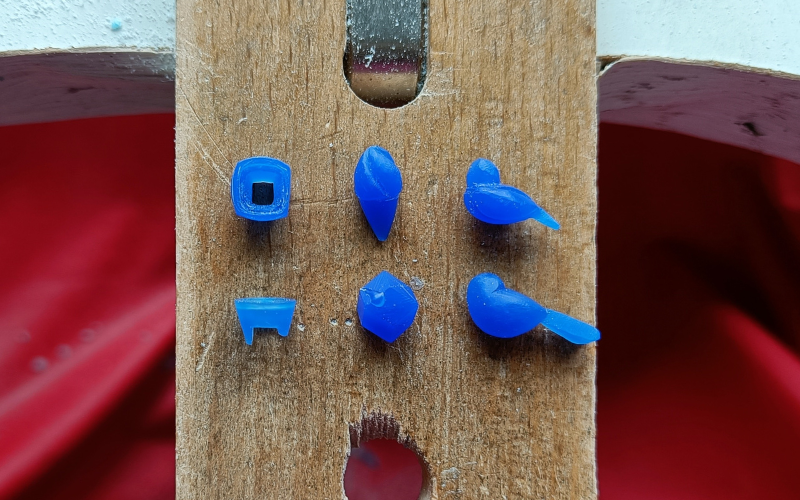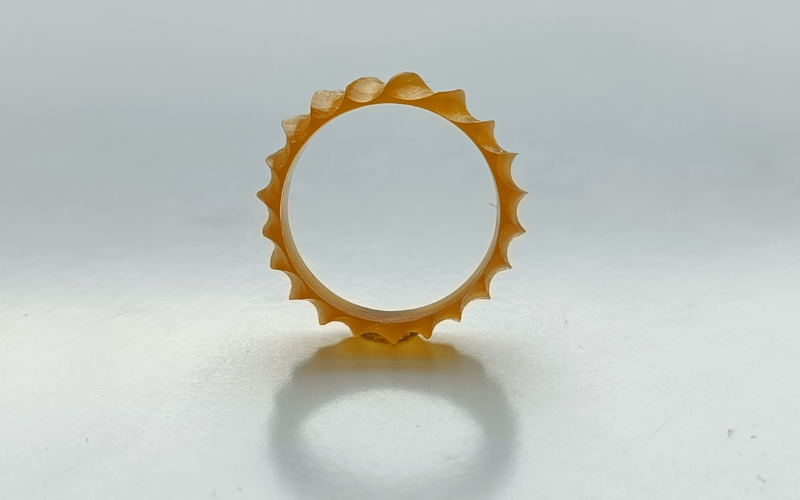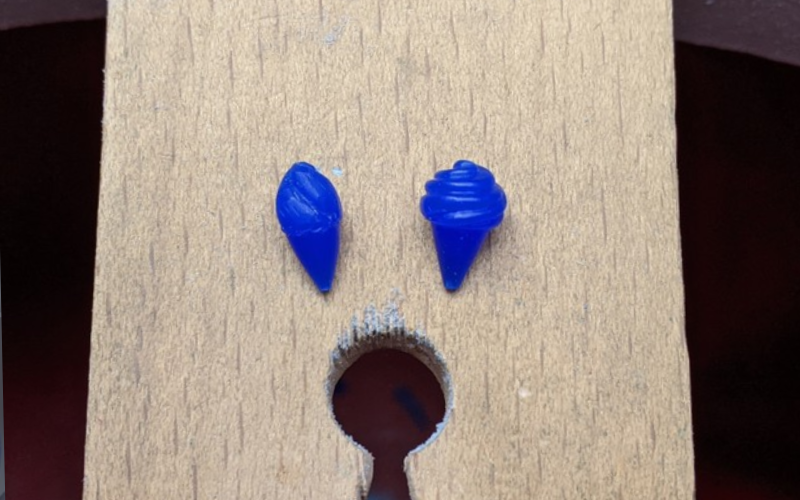Wax carving advent calendars?Wax carving advent calendars?
Leave, fix, or redo?

Let’s face it, not every piece you make comes out absolutely perfect. It happens to all of us! And honestly, the pieces that are a liiitlle bit of a struggle are usually the ones you learn the most from. You have to embrace those not absolutely perfect pieces as the learning experiences they are!
But what do you do with your piece when you realize it’s not perfect?
I divide my imperfect pieces into 3 categories:
Leave it: accept the imperfection and move on.
Fix it: fix the imperfection and make the piece perfect.
Redo it: leave this piece as is and try again from scratch.
On rare occasions it’s immediately clear which category a piece belongs to. For all the other times, this is how I decide which category a piece ends up in.
Leave
The first question I ask myself: is the imperfection noticeable?
Let’s say you’re removing weight from the back of a pendant to make it lighter. You want the wall thickness of the piece to be 1mm, but in one small section you removed too much and the wall is .8mm thick. Realistically nobody is going to see the back of the pendant, and as long as the front is perfect I would leave this imperfection alone.
There are loads of small imperfections like this that are unnoticeable. Leave them alone! Just file it away that next time you should pay a little more attention when you’re removing weight from the back so it doesn’t happen again.
If the imperfection is noticeable: does it look like a mistake or part of the design?
Let’s say you’re making a square. If one side of the square is noticeably shorter than the others it looks like a mistake. There are loads of imperfections that make a piece look not quite right. If that’s the case, the piece goes to one of the other categories.
Let’s say you’re making a ring with a wave pattern.

The waves are not perfectly the same, and it’s noticeable. But in this case it doesn't looks like a mistake, it looks like part of the design. If an imperfection doesn’t distract from your design but looks like it belongs, leave it alone. It’s a happy little accident!
Deciding if an imperfection looks like a mistake or part of the design is subjective. Lucky for you as the maker you get to decide!
We’ve separated all the pieces that have imperfections that you can leave. Now it’s time to decide if your other pieces should be fixed or if you should start over.
Fix
How easy is the fix/how long does it take?
Let’s say you have a court shaped ring, you filed one section too much and there’s a bit of a dip in the profile. You can add some wax on the dip and file it into shape to match the rest of the ring. Easy fix, doesn’t take too much time. Fix it!
Let’s say you made an initial pendant but it’s too small. You have to add wax in all the different places that need it to make it the correct size, carve the added wax into shape, and really you have to recarve the entire initial to make sure the proportions work out. Not an easy or fast fix. It’s probably faster and easier to redo the piece starting from the correct size. Maybe save this small initial for a time you need a smaller initial?
There are loads of small imperfections that are easy/fast to fix. Less so small imperfections that are difficult/time consuming to fix. Realistically you will realize long before you finish that your initial is too small and start over before you get to the end!
That’s why there’s actually a different question I ask myself first to decide if I should fix or redo a piece.
Redo
Can I do a better job if I make this again?
Sometimes you make a piece and everything goes perfectly. Except one little thing. Too much pressure on one file stroke and you created a dip in an otherwise perfect make and perfect court ring. Can I do a better job if I make this again? No. I’ll make this ring exactly the same except for that last file stroke. If that’s the case I’ll fix the imperfection.
But other times you look at a piece and decide yes, I can do a better job if I make this again! There are loads of reasons you think you can do a better job, and rarely are they related to the imperfection.
You just don’t like the way the piece looks, imperfection aside, and know that if you make some design modifications along the way version 2.0 will be much better looking. While making the piece you realize there’s a different way you can make it that’s probably easier and faster, now you have an excuse to immediately try it out. It's a challenge to yourself, this is not the best I can do, of course I can do a better job the second time around.

Whatever the reason is, when you feel you can do a better job you should 100% redo the piece. Because that second piece will look better! And spending extra time carving can only make you better in the long run.
It can be hard to decide to start over, especially if it’s a time consuming make. It helps to think of your original piece as your learning piece, and this remake as the real piece.
Don’t decide immediately
And sometimes it’s best to wait a little bit before you decide, especially if you feel angry or disappointed. When you’re upset with yourself that you didn’t make the piece perfectly it’s very hard to decide how to continue. Put the piece aside and work on something else until you don’t have such strong emotions about the piece.
What would you tell your jewellery friend if they showed you the piece and asked for advice? ‘You know better and should’ve just made it perfect’? Of course not! You look at the piece without any feelings or emotions attached to it, because you didn’t make it, and give your thoughts and advice.
And that’s what you can do for yourself as well by waiting a bit before you decide what to do. When you can look at your piece neutrally it’s so much easier to decide if you should leave it, fix it, or redo the piece!
Comment below and let me know if this look into my decision making process was helpful!